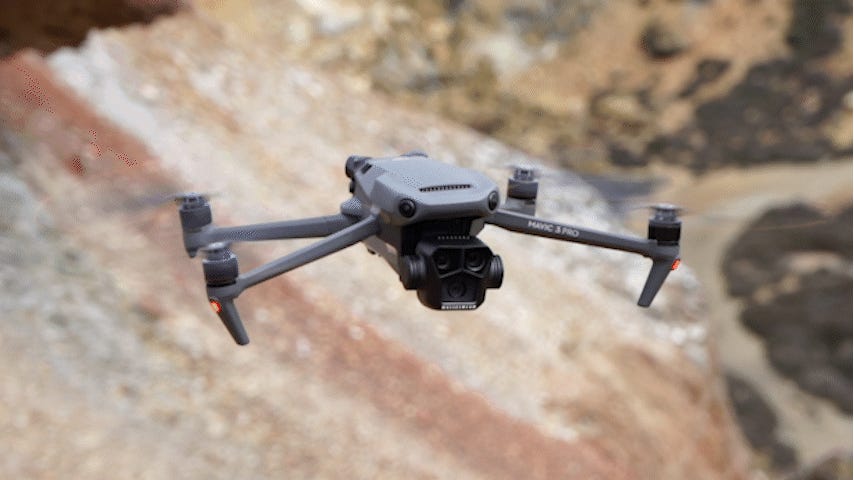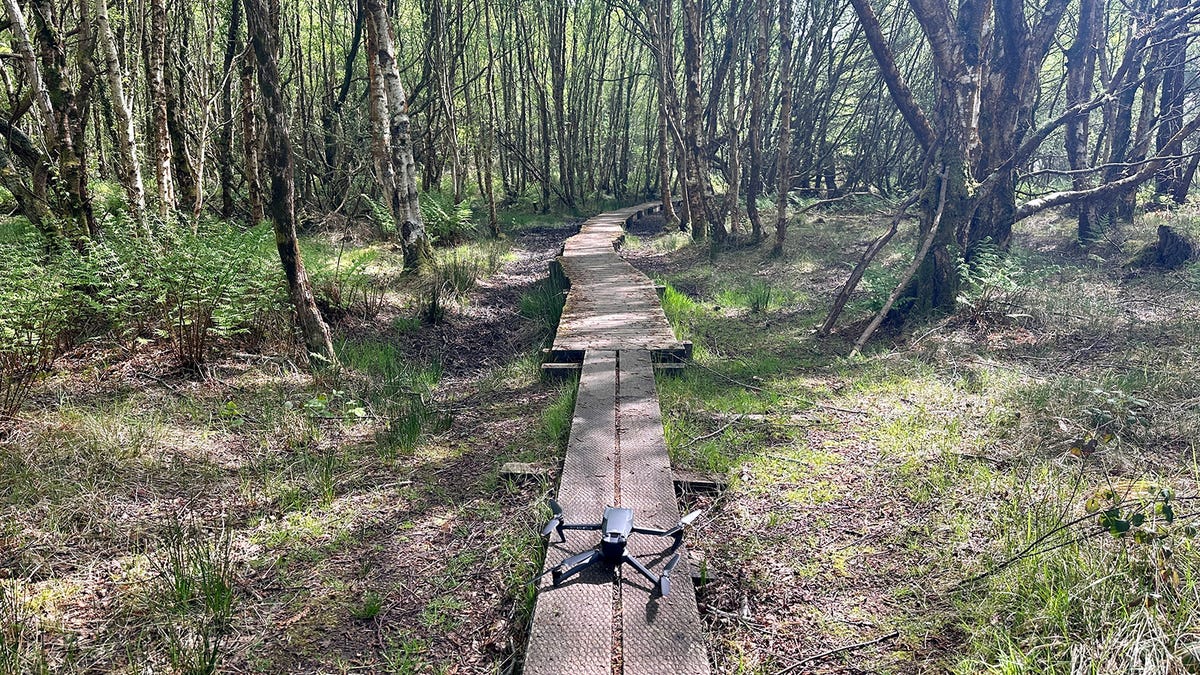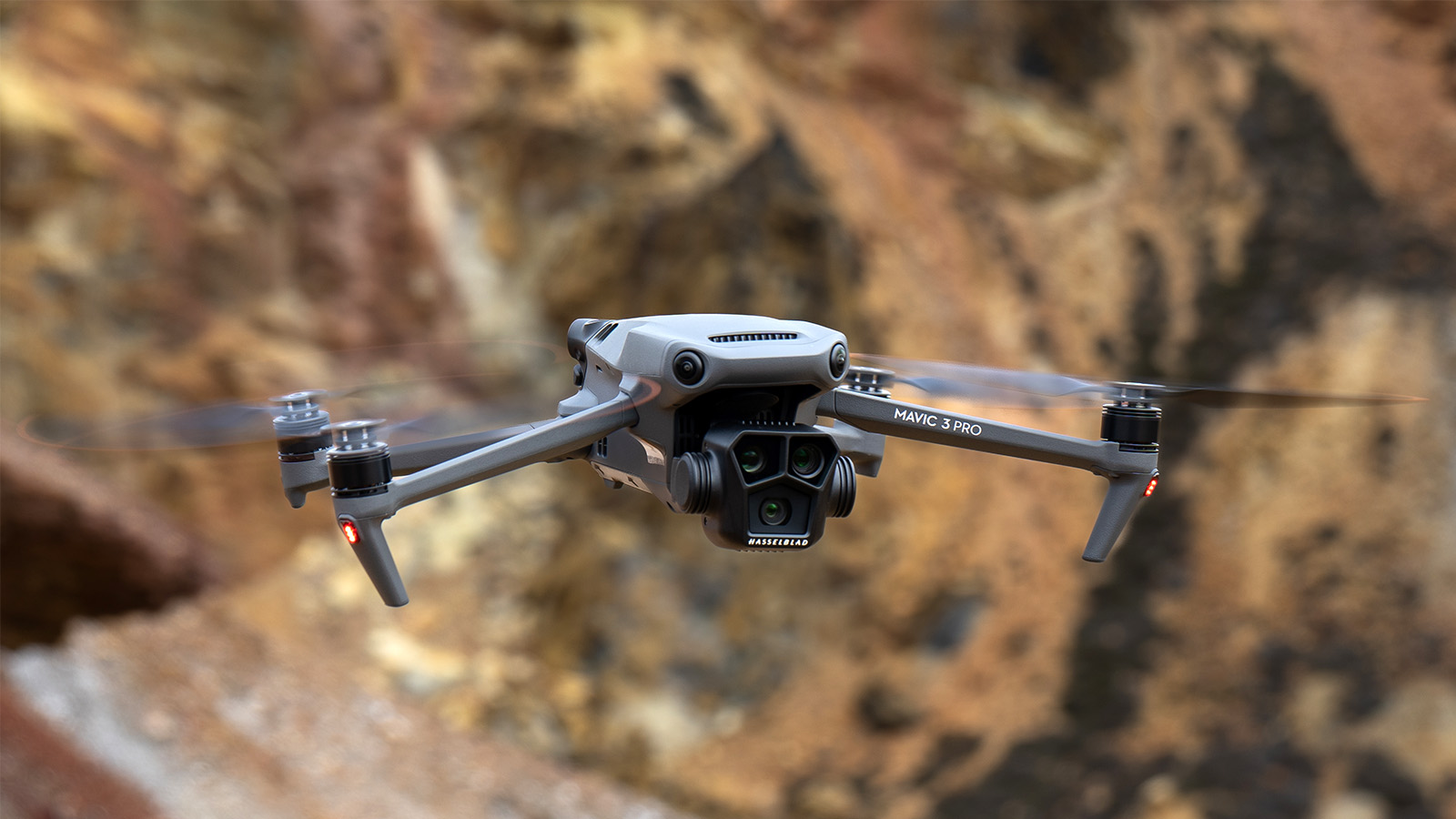At the end of April 2022, DJI presented its new prosumer drone, the Mavic 3 Pro. Building on the technical foundation of the Mavic 3, this drone takes it to the next level by incorporating a third camera to the already impressive front camera platform.
There is no doubt that the Mavic 3, which is no longer sold today, was the best drone of the year 2022. Although it was initially launched with unfinished features, subsequent updates to the firmware have rectified these issues. Given the excellence of the Mavic 3, I was eager to assess the performance of its successor.
Could the Mavic 3 Pro be the best drone of 2023?
A feeling identical to the Mavic 3
To find out, I tested it. So how did the Mavic 3 Pro perform? Frankly, his abilities left me speechless. Let’s start with its aerial performance.
Considering my many hours of flying with the Mavic 3, I found the familiar feel of the Mavic 3 Pro made for a quick and easy adjustment between the two drones. Despite sometimes odd flight characteristics and an app interface that lacks a bit of responsiveness, the Mavic 3 Pro struck me as a finished product, ready to do some serious work. I expect future firmware updates to fix these minor issues as DJI receives real flight data.

Mavic 3 Pro in high winds. Katherine Betteridge/ZDNET
Everything worked. The Mavic 3 Pro demonstrated remarkable stability in a variety of conditions, from windswept copper mines to sheltered forests. This stability inspires the confidence to push the drone to its limits and capture the shots you want. The obstacle avoidance system – which works just as well, if not better, on the Mavic 3 Pro than on the Mavic 3 – allows me to fly the drone closer to trees and rocks without hesitation to get really close to the subject.

Trees are a real test for the Mavic 3 Pro’s obstacle avoidance system. Adrian Kingsley-Hughes/ZDNET
30 mins per charge
And if I needed to get closer, I’d take a chance, disable the sensor array, and fly the drone within inches of rocks and trees. This is only possible with a drone that is stable in flight and hovering, and the Mavic 3 Pro has nothing to envy its predecessors from this point of view.
Battery life is also impressive, with around 30 minutes per charge, outperforming rivals like the Mini 3 Pro and Air 2S.
On the camera side, with the dual-camera Mavic 3, most of my shots were taken with the Hasselblad CMOS 4/3 24mm-equivalent wide-angle camera. For what ? Because the equivalent 166mm telecamera in ‘explorer mode’ was nowhere near as good.
The Mavic 3 Pro retains the same rangefinder camera as its predecessor
The Mavic 3 Pro retains the same rangefinder camera as its predecessor, which leads to the same problems: the captured images are not very usable, but require a good dose of post-processing to obtain correct results. Yes, DJI calls this camera an “Explorer Mode”, the idea being that you use it to scout locations during flight.
But if you give content creators a camera, they will try to create content with it!
New to the Mavic 3 Pro is the 70mm-equivalent medium rangefinder camera, which performs excellently and triples the number of shots compared to the primary wide-angle. You can get closer without having to move the drone closer, opening up new creative possibilities for content creators.
Lack of neutral density (ND) filters proved to be a hindrance
In my testing, the lack of neutral density (ND) filters turned out to be a minor hurdle. ND filters work like sunglasses for the camera, allowing better control of lighting. This aspect is crucial for capturing video in bright conditions, as ND filters allow the shot to be adjusted more precisely. While the wide-angle camera has built-in aperture control – similar to the iris of an eye that adjusts to light – the other cameras lack this feature.
As a result, I found myself slightly limited when using the medium telephoto lens, and the resulting photos required more post-processing to reach the quality of the wide-angle camera.
However, if you’re buying the Mavic 3 Pro, I highly recommend getting the Mavic 3 Pro that comes with ND filters, or buying quality third-party filters that should hit the market soon, offered by manufacturers such as Polar Pro, Freewell, or PGYTech.
Powerful, stable, quiet
The lack of ND filters aside, the Mavic 3 Pro is an exceptional drone. It’s powerful, stable, quiet, has a great camera and significantly better battery life than its competitors.
In conclusion, the Mavic 3 Pro confidently – without doubt and without reservation – claims the title of best drone for 2023.
DJI is way ahead of its competition, and this drone is a substantial improvement over the Mavic 3. For those looking for a prosumer drone, look no further. If you already own a Mavic 3 and need to get closer to your subjects, the mid-telephoto camera will give you exactly that on an otherwise familiar platform, which might make it the perfect upgrade.
However, with a prosumer drone comes a prosumer price, and if you’re just starting out, I’d recommend building up your piloting skills with something a little cheaper, like the excellent DJI Mini 3 or Mini 3 ProDJI . As for me, I already use my Mini 3 Pro a lot, and I am blown away by the incredible power of this sub-250 gram drone.
Source: “ZDNet.com”
